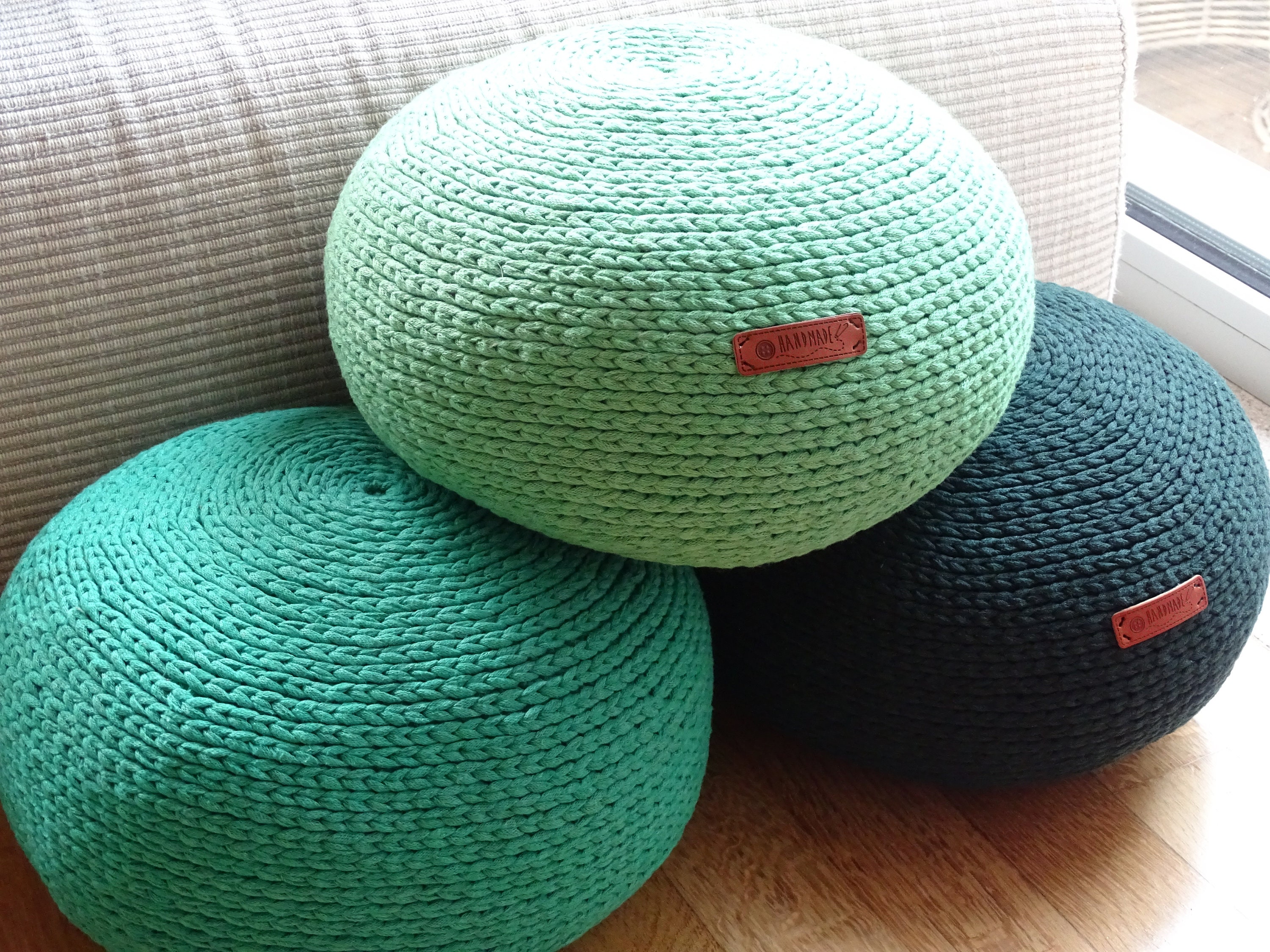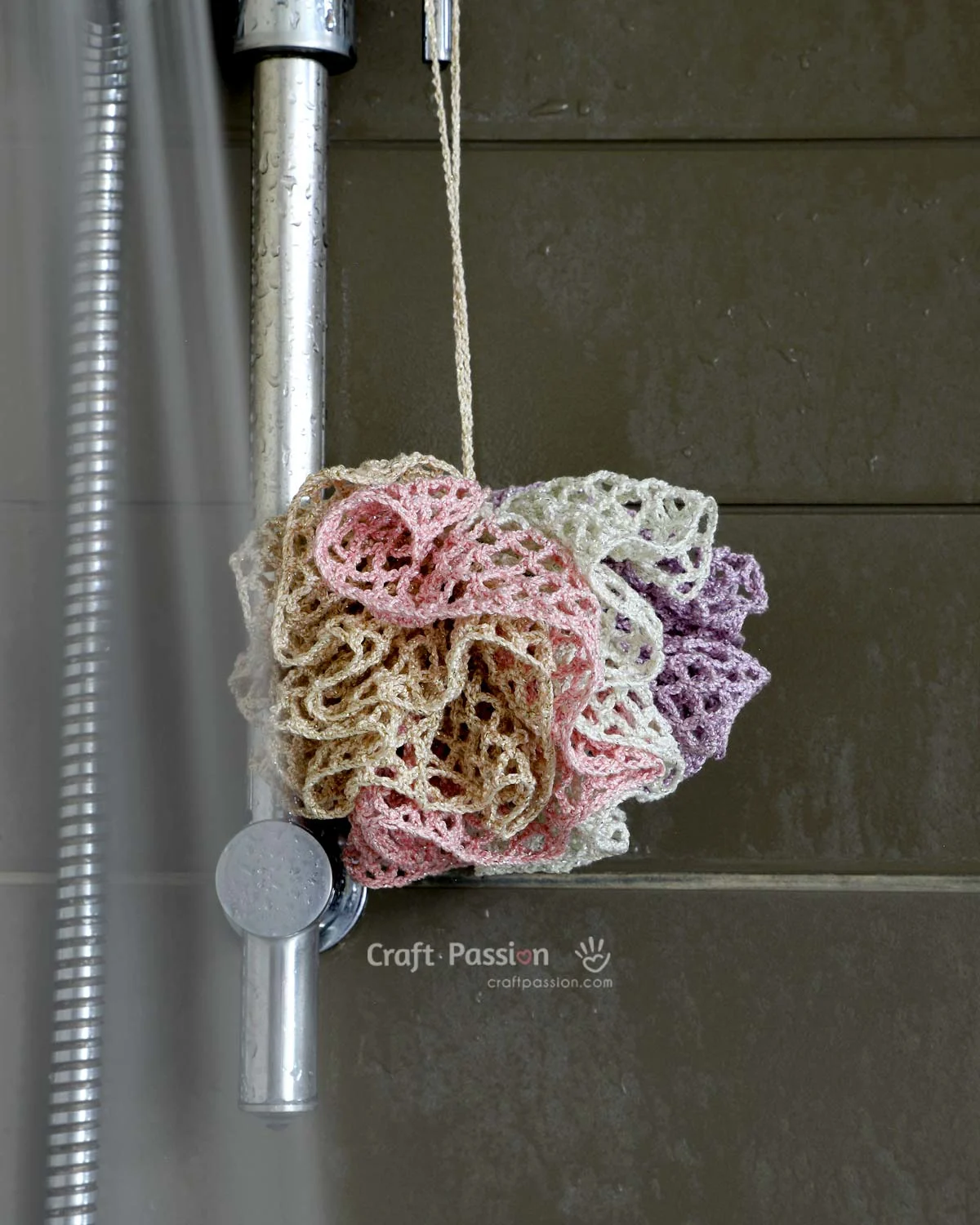Are you wondering what to stuff your crocheted pouf ball with to make it soft, sturdy, and comfortable? Choosing the right filling can completely change how your pouf looks and feels.
Whether you want it light and squishy or firm and supportive, the stuffing you pick matters a lot. In this post, you’ll discover the best options to fill your pouf ball, practical tips to get the perfect shape, and tricks to keep it looking great for years.
Keep reading—you’re just a few steps away from making your cozy pouf exactly how you want it!

Credit: www.etsy.com
Choosing The Right Filling
Choosing the right filling for your crocheted pouf ball affects its look and feel. The filling shapes the pouf and gives it comfort. Picking the best material means your pouf stays soft and sturdy. This section helps you decide the right stuffing that fits your needs and style.
Factors To Consider
- Size of the pouf ball
- Weight and firmness needed
- Ease of cleaning and maintenance
- Allergy concerns
- Budget for materials
Think about where you will use the pouf and how often. Some fillings suit heavy use better. Others work well for light decoration. Choose something that matches your lifestyle.
Durability And Comfort
Durable fillings keep the pouf’s shape over time. Foam beads and polyester stuffing last long and resist flattening. Natural fibers like cotton offer softness but may compress faster.
Comfort matters if the pouf will be used for sitting or footrest. A mix of firm and soft filling provides good support. Soft stuffing makes the pouf cozy but can lose shape quickly.

Credit: www.craftpassion.com
Common Filling Materials
Choosing the right filling material for a crocheted pouf ball affects its shape, comfort, and durability. Common filling materials offer different textures and firmness levels. Some are soft and fluffy, while others provide more support. Understanding these options helps make the best choice for your project.
Polyester Fiberfill
Polyester fiberfill is soft and lightweight. It creates a plush, cushy feel for your pouf ball. This material is easy to find at craft stores and simple to stuff. It holds shape well but can compress over time. Fiberfill is washable and hypoallergenic, making it a popular choice.
Foam Pieces
Foam pieces add firm support to the pouf ball. They keep the shape sturdy and bounce back after use. Foam can be cut to size and is ideal for larger poufs. It is more durable than fiberfill but less soft. This filling is great for poufs meant for sitting or resting feet.
Fabric Scraps
Fabric scraps are an eco-friendly option for stuffing. They create a denser and heavier pouf ball. Using old clothes or leftover fabric reduces waste and saves money. Scraps may create a firmer feel and sometimes uneven texture. This filling is best for those who want a sustainable choice.
Alternative Filling Options
Polyester fiberfill, foam beads, or scrap yarn make great stuffing choices for a crocheted pouf ball. Lightweight and soft materials help maintain shape and comfort. Experiment with different fillings to find the best feel and firmness for your pouf.
Crocheted pouf balls are versatile and stylish. They can be filled with various materials to suit your needs. While traditional stuffing methods are common, alternative fillings can add uniqueness and practicality. Consider these options for a creative and functional pouf ball.Plastic Pellets
Plastic pellets are a popular choice for filling pouf balls. They offer a firm structure while remaining lightweight. This makes them easy to move around. Plastic pellets are durable and resistant to moisture. They’re perfect for outdoor use. To use, simply fill a bag with pellets and insert it into the pouf. Ensure the bag is securely closed to prevent spills.Old Clothing
Recycling old clothing is an eco-friendly filling option. It provides a soft and plush feel to your pouf. Cut the clothing into small pieces for even distribution. This method is cost-effective and reduces waste. Choose fabrics that are clean and free from odors. Your pouf will have a cozy and inviting texture.Natural Fillings
Natural fillings, like cotton or wool, are breathable and comfortable. They offer a sustainable alternative to synthetic materials. Natural fibers are soft and gentle on the skin. This makes them ideal for indoor poufs. Fill the pouf with loose fibers for a softer feel. Ensure the pouf cover is tightly stitched to maintain shape.Combining Fillings For Best Results
Combining different fillings can improve your crocheted pouf ball’s comfort and shape. Using a mix of materials helps achieve a balance between softness and support. This approach also extends the life of your pouf by preventing it from flattening quickly. Experiment with layers and textures for the best feel and durability.
Layering Techniques
Start by placing firmer materials at the core of the pouf. Use stuffing like foam beads or polyester fiberfill for structure. Add softer fillings such as cotton or wool on the outer layers for cushioning. Layering helps the pouf keep its round shape while staying comfortable to sit on.
- Core: Foam beads or small pellets for firmness
- Middle: Polyester fiberfill for bulk and softness
- Outer: Cotton or wool for a plush finish
Pack each layer evenly to avoid lumps. This method creates a pouf that feels firm but gentle on the skin.
Balancing Softness And Firmness
Too much softness can make the pouf lose shape. Too much firmness can make it uncomfortable. Aim for a mix that supports your body while still feeling cozy.
| Filling Type | Feel | Benefit |
|---|---|---|
| Foam Beads | Firm | Maintains shape |
| Polyester Fiberfill | Soft | Adds volume and cushioning |
| Cotton/Wool | Plush | Comfortable surface |
Test your filling mix by pressing the pouf. Adjust layers until it feels just right. This balance ensures long-lasting comfort and style.
Filling Tips And Tricks
Choosing the right filling for your crocheted pouf ball is key to its comfort and look. The right stuffing keeps the pouf soft and firm. Filling tips can help avoid lumps and keep the shape strong over time. These tricks make your pouf last longer and feel better.
Avoiding Lumps
Lumps in a pouf feel uncomfortable and look uneven. Use small, even pieces of stuffing for a smooth surface. Fluff the filling before placing it inside. Pack the stuffing evenly, layer by layer. Shake the pouf gently after stuffing to settle the material. Avoid overstuffing, which can cause bulges.
Maintaining Shape Over Time
A pouf should keep its shape after long use. Use dense stuffing like polyester fiberfill or foam beads. Add a core, such as a small pillow or foam insert, for extra support. Check and fluff the filling regularly to prevent flat spots. Stitch the opening securely to keep stuffing from escaping. Proper filling helps the pouf stay firm and comfy for years.
Safety And Care Considerations
Choosing the right stuffing for your crocheted pouf ball involves more than just filling it up. Safety and care should guide your decisions to keep your pouf comfortable, durable, and safe for everyone around. Let’s look at options that protect your health and make maintenance easier.
Hypoallergenic Options
If you or someone in your home has allergies, hypoallergenic stuffing is a smart choice. Materials like polyester fiberfill or cotton batting are less likely to trigger allergic reactions compared to traditional fillings like feathers or wool.
Polyester fiberfill is lightweight, soft, and resists dust mites, which makes it ideal for those sensitive to allergens. Cotton batting offers natural breathability and is often organic, reducing exposure to chemicals. Have you checked if your local craft store offers these allergy-friendly options?
Cleaning And Maintenance
Keeping your pouf clean extends its life and keeps it looking fresh. Removable covers can simplify washing, but the stuffing itself also matters for hygiene.
- Polyester fiberfill:Easy to wash and dries quickly, making it low maintenance.
- Foam beads:Can be spot cleaned but may trap dirt over time.
- Natural fibers:Might require gentle washing and air drying to avoid clumping or damage.
Consider stuffing materials that can withstand occasional cleaning, especially if your pouf will be in a high-traffic area or used by children. What cleaning routine fits your lifestyle best?

Credit: www.craftpassion.com
Frequently Asked Questions
What Materials Are Best For Stuffing A Crocheted Pouf Ball?
The best stuffing materials include polyester fiberfill, foam beads, or recycled fabric scraps. These provide softness, shape, and durability for your pouf ball. Choose based on desired firmness and budget.
Can I Use Old Clothes To Stuff A Crocheted Pouf?
Yes, old clothes can be shredded and used as stuffing. They are eco-friendly and inexpensive but may make the pouf heavier and less uniform in shape.
How Much Stuffing Does A Pouf Ball Need?
Stuff your pouf ball firmly but not overly tight. Enough stuffing ensures shape retention and comfort. Typically, fill it until the pouf feels solid yet squeezable.
Are Foam Beads Better Than Fiberfill For Pouf Stuffing?
Foam beads offer more support and maintain shape longer. Fiberfill is softer and easier to work with. Choose foam beads for firmness, fiberfill for a plush feel.
Conclusion
Choosing the right stuffing makes your crocheted pouf ball comfy and sturdy. Soft polyester fiberfill gives a fluffy feel. Small foam pieces add firm support. Old fabric scraps work well for a budget option. Avoid heavy materials that may distort the shape.
Fill little by little to keep the shape even. A well-stuffed pouf lasts longer and feels better. Enjoy making your cozy, handmade pouf ball perfect for any room.





